Mobility & Transportation
Mobility is a fundamental shaping force of cities and has an outsized impact on resiliency, health, and the human experience. Through research and a people-first approach to design, we can leverage transportation to improve lives.
“
The five factors that really drive transit experience are: safety, cleanliness, free time on transit, digital connectivity, and media access.
—Jaymes Dunsmore, Mobility & Transportation leader
15 Items
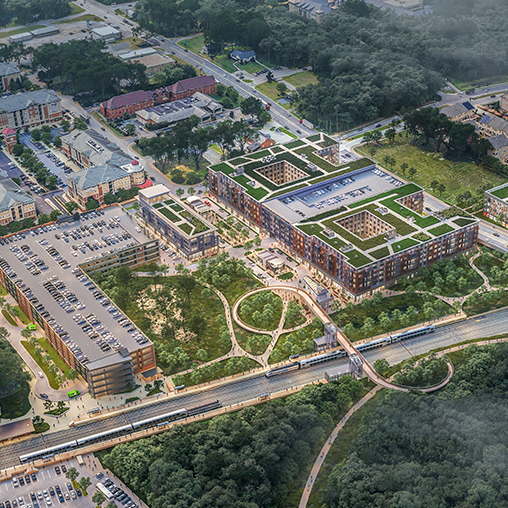
The Penn Line Transit-Oriented Development Strategy Plan
Odenton, Maryland
Plans are underway to spur development along the MARC Penn Line and create denser, mixed-use communities around transit hubs between Washington and Baltimore.
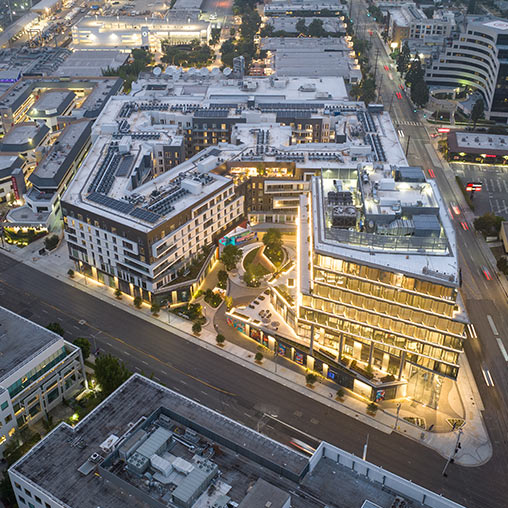
West Edge
Los Angeles, California
West Edge defines what a live, work, and play environment can embody on LA’s west side, as one of the area's first mixed-use, transit-oriented developments.
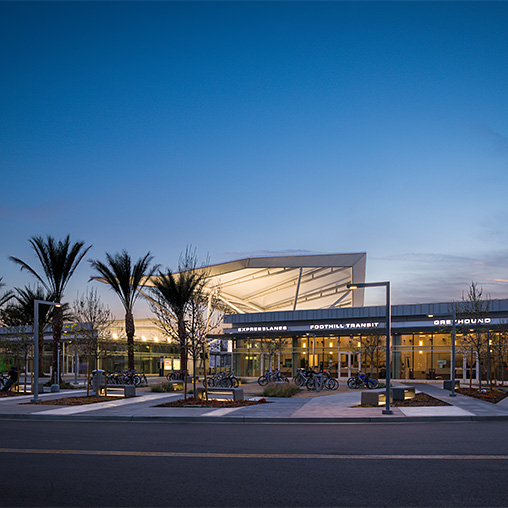
El Monte Busway and Transit Pavilion
El Monte, California
The LEED Gold, $50.0 million El Monte Busway and Transit Center replaces the existing busway and provides an enhanced experience for 40,000 daily commuters.
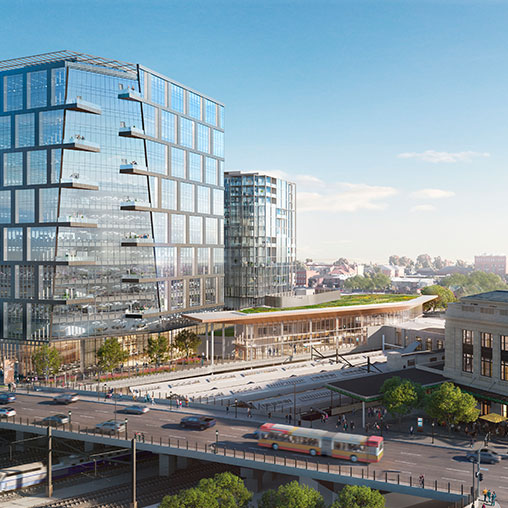
Amtrak – Baltimore Penn Station Lanvale Expansion
Baltimore, Maryland
Baltimore Penn Station is a transformative project that helps the city rethink its future and leverages the concept of “train as theater.”
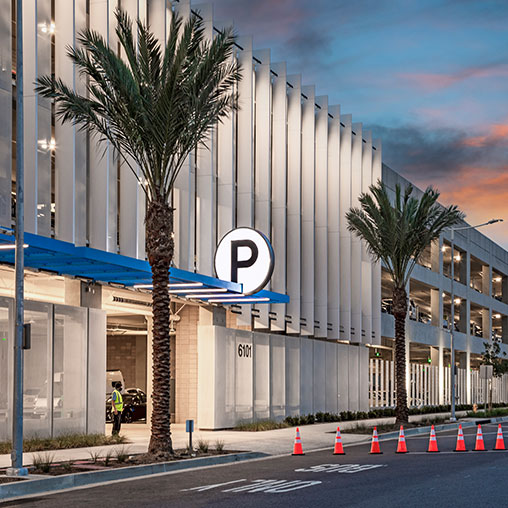
LAX Economy Parking Garage
Los Angeles, California
The LAX Economy Parking Structure, the first component of LAX’s landside modernization program, is the new front door to the airport.

Union / Patsaouras Plaza Busway Station
Los Angeles, California
The Patsaouras Bus Plaza provides an easier, safer travel experience for LA Metro and Foothill Transit riders to access connections at Union Station.
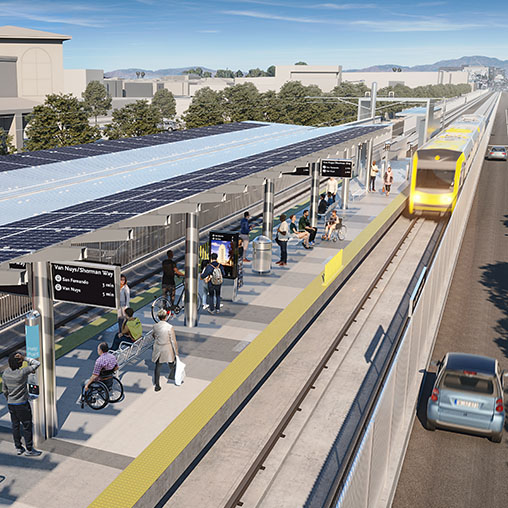
LA Metro Integrated Station Design Solutions
Los Angeles, California
Gensler is working as LA Metro’s consultant to develop Integrated Station Design Solutions as the city undertakes one of the largest transit system expansions.
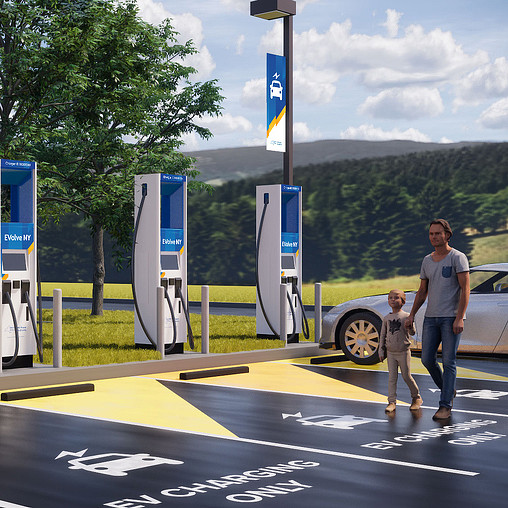
NYPA EV Charging Stations
White Plains, New York
When the New York Power Authority launched their state-wide electric vehicle charging program, EVolve-NY, they partnered with Gensler to create a unique and memorable brand identity that would be easily recognizable to drivers and stand out in the growing EV market. The rapidly growing EVolve NY program locates charging points at 50 mile intervals across the state, making EVs easy to own and dramatically reducing the carbon footprint of the state's transportation sector.
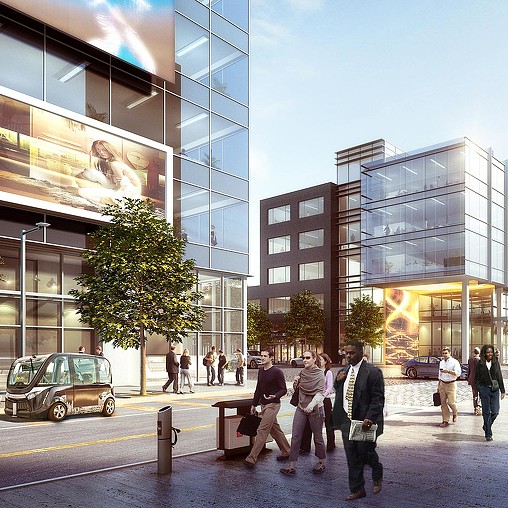
Peña Station Transit-Oriented Development Plan
Denver, Colorado
Working with DEN Real Estate, Gensler developed a long-term development framework for a key, 60-acre site adjacent to the 61st St. and Peña light rail station.
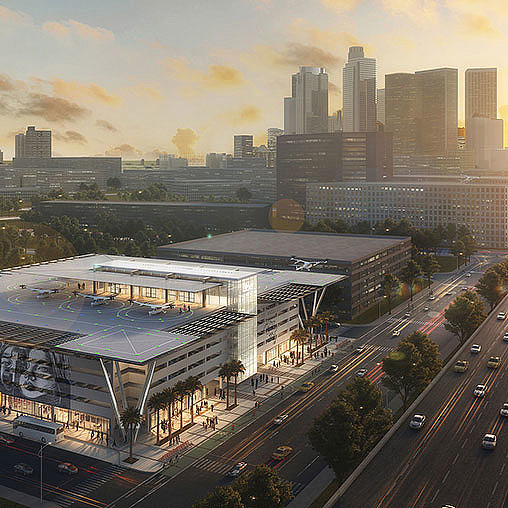
Uber Skyport Mobility Hub Concept
Dallas, Texas, and Los Angeles, California
This is the promise of Aerial Rideshare, and this is why we created our CitySpace concept for Uber's Skyport Mobility Hub.
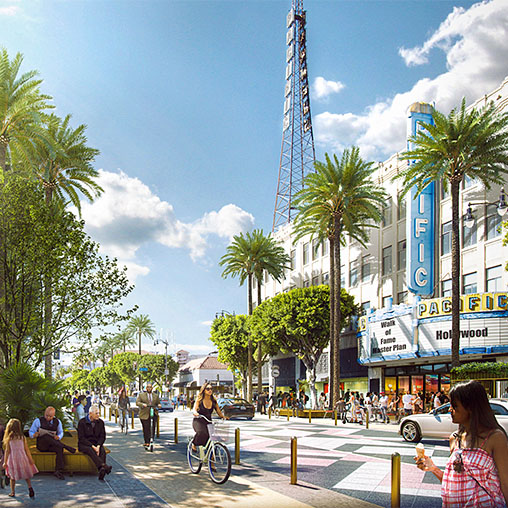
Hollywood Boulevard Walk of Fame Streetscape
Hollywood, California
Gensler reimagined the iconic Hollywood Walk of Fame by creating a streetscape plan that enhances the pedestrian experience and supports transportation modes.
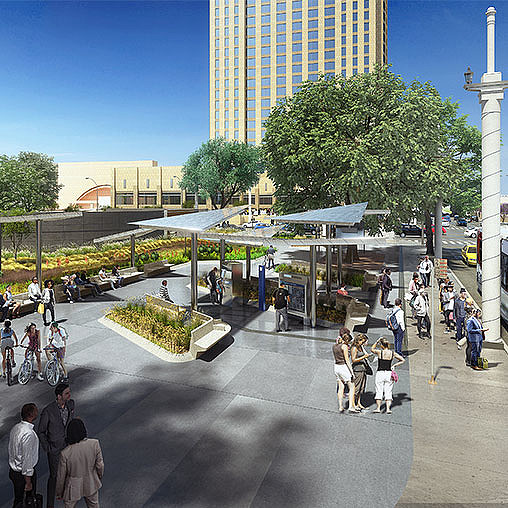
Cesar Chavez Transit Pavilion at Los Angeles Union Station
Los Angeles, California
The Cesar Chavez Transit Pavilion is designed to connect local metro riders to the multi-modal options at the Los Angeles Union Station, as part of an overall master plan to accommodate increased ridership, relieve traffic congestion, and improve the passenger experience.
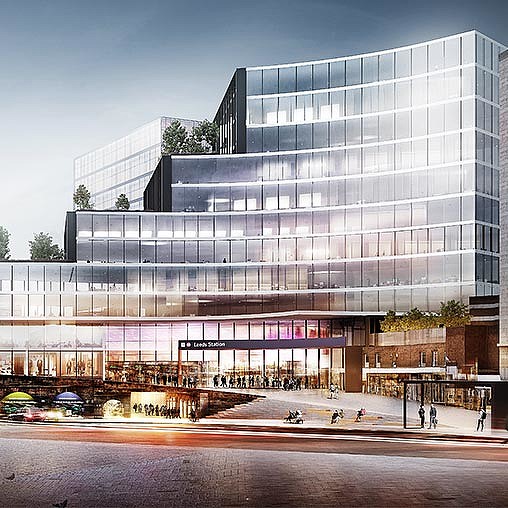
Leeds Station Masterplan
Leeds, United Kingdom
Leeds Station, a historic multimodal transport interchange that serves 30 million passengers a year, is set to undergo a massive modernisation program with Gensler leading the master planning of the urban renewal project.
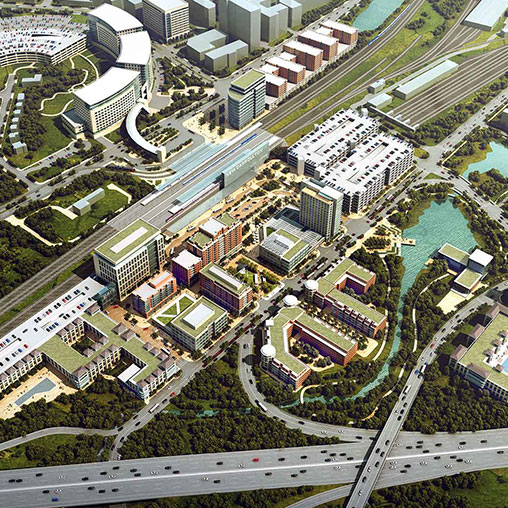
New Carrollton
New Carrollton, Maryland
This public-private partnership looks to turn an under-performing transit-adjacent site into a vibrant transit-oriented hub in New Carrollton, Maryland...
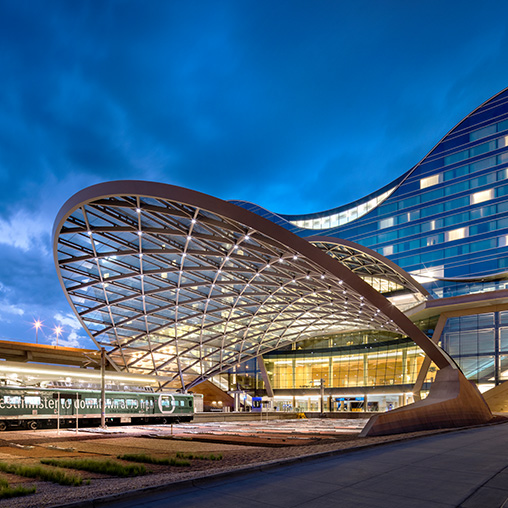
Westin DEN Hotel and Transit Center
Denver, Colorado
Westin DEN Hotel and Transit Center, a LEED Platinum-Certified project by Gensler, is the final piece toward the realization of DEN’s original 1989 master plan.
INSIGHTS
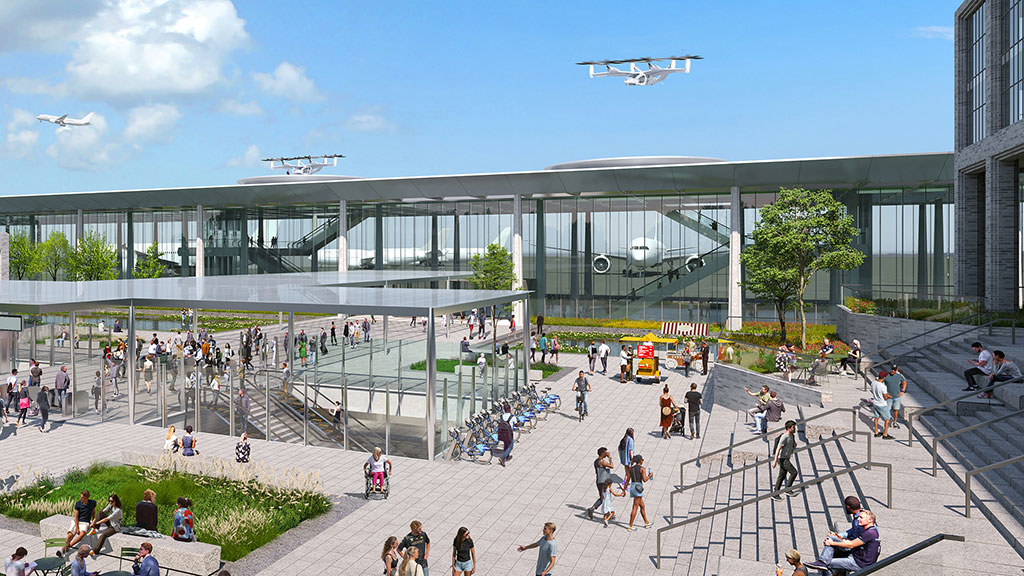
Blog
Urban Air Mobility Is Here. Here’s How Cities Can Adapt.
Advanced air mobility is ready for launch. The next crucial step: preparing buildings and infrastructure to get this sustainable mobility solution off the ground.
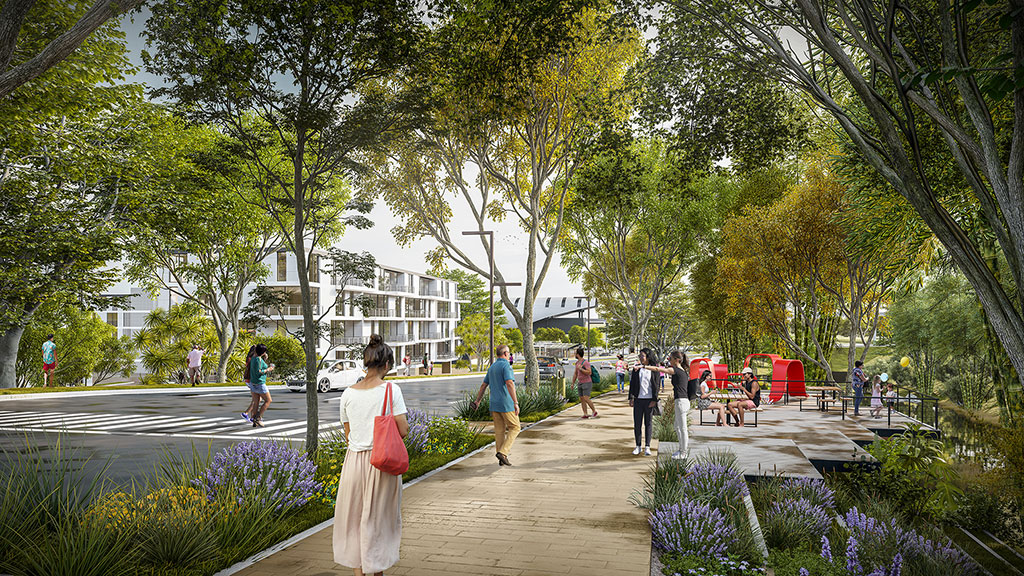
Blog
A New Vision for Urban Design in Tropical Climates
Through thoughtful, climate-responsive design, seemingly adverse conditions can become a distinct advantage for tropical cities.
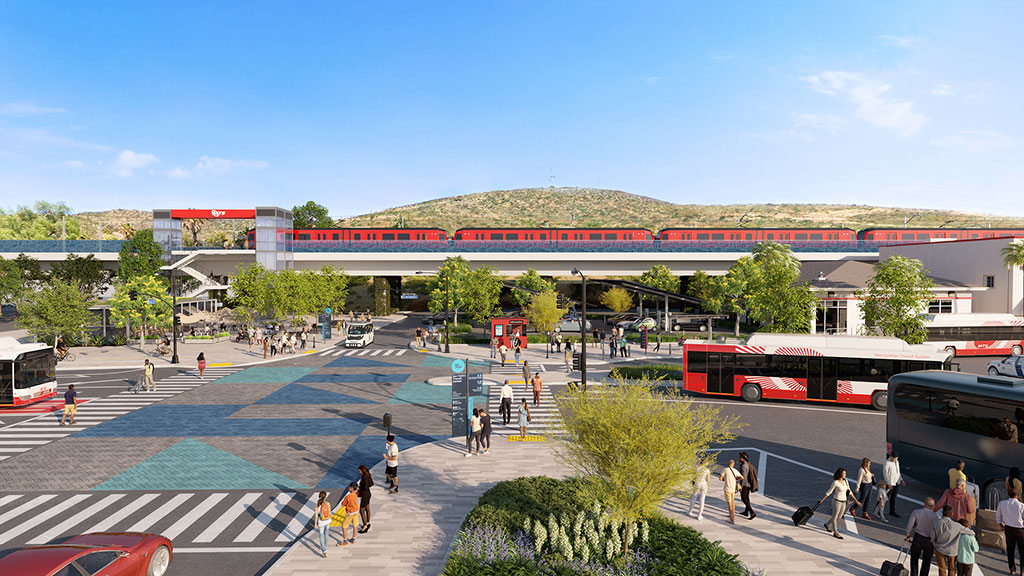
Blog
Trends to Watch Shaping the Future of Mobility and Transportation
Gensler’s mobility and transportation leaders discuss the biggest trends shaping the industry, from micromobility to electrification.
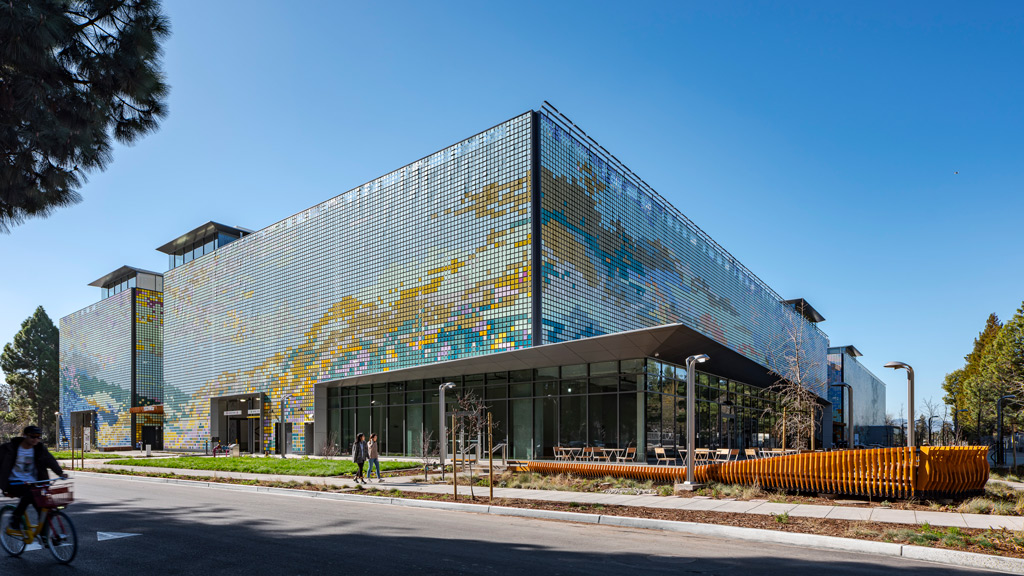
Blog
A Future-Proofed Garage in the Heart of Silicon Valley
Near Google’s headquarters in Mountain View, Alta Garage was designed with a second life in mind — one that is not limited to parking.
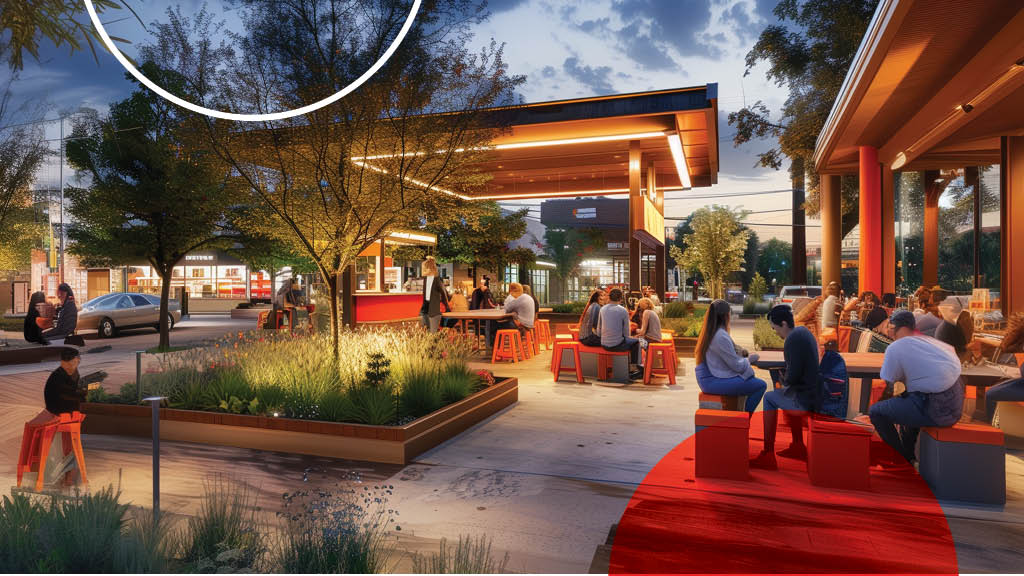
Research
The Future of Gas Station Sites
We created an interactive tool to help architects and clients map underutilized gas station sites and aid decision-making to repurpose these stranded assets.
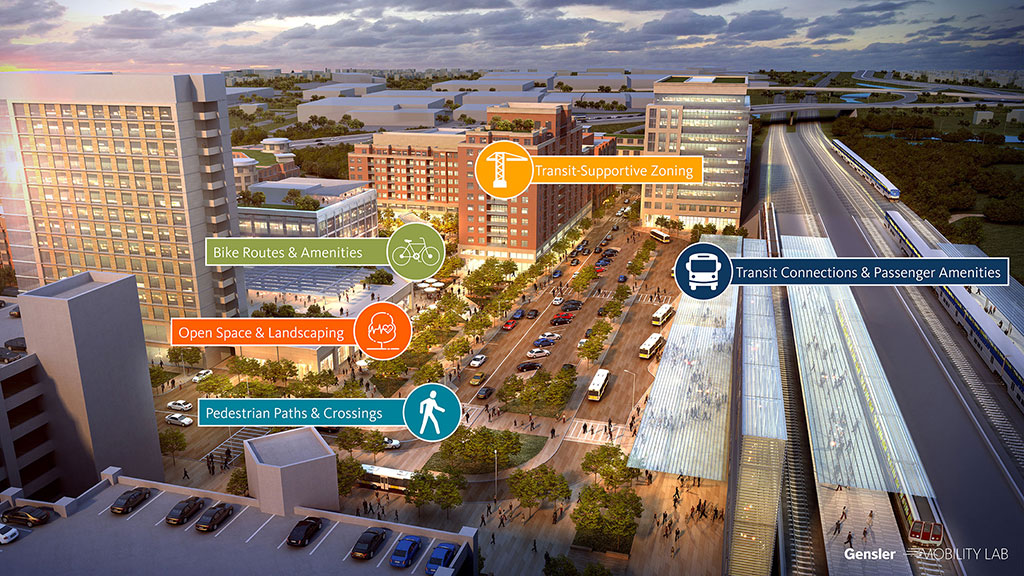
Blog
Introducing the Gensler Transit-Oriented Development Opportunity Index
The Gensler Transit-Oriented Development (TOD) Opportunity IndexTM is a tool for unlocking the unrealized value of existing transit stations and facilities.
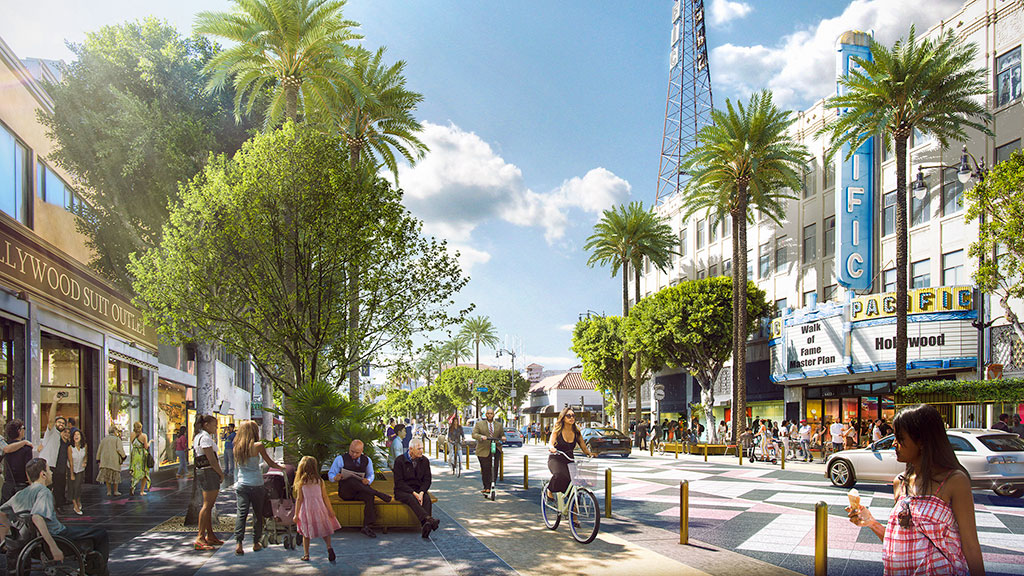
Blog
The Most Impactful Urban Infrastructure? City Streets
Gensler’s plan for Hollywood Boulevard demonstrates how rethinking city streets can revitalize cities, create healthy communities, and support sustainable mobility.
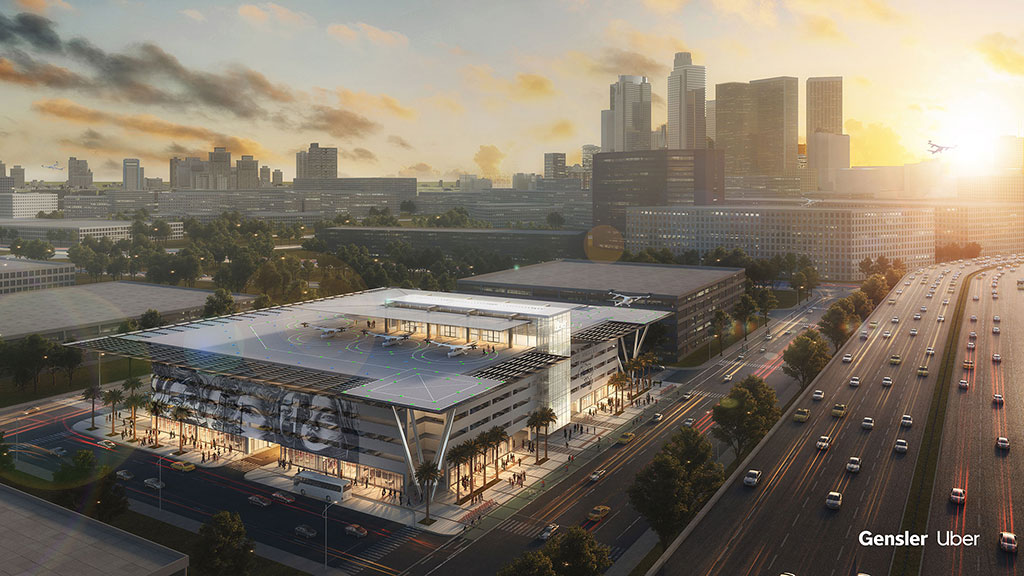
Blog
How eVTOLs Could Create a More Inclusive, Sustainable Future for Mobility
Advanced air mobility could have transformative effects on the way we live, creating an inclusive and sustainable future of mobility for all.
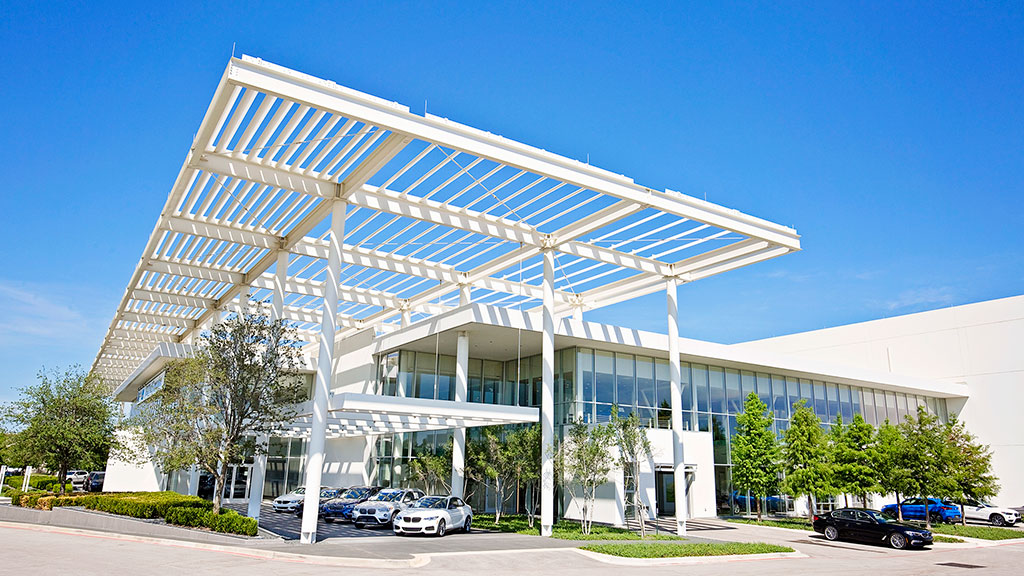
Blog
The EV Revolution — And Why Charging Stations Are So Critical
Gensler’s mobility and aviation experts discuss what’s next for electric vehicles, EV charging stations, and more.
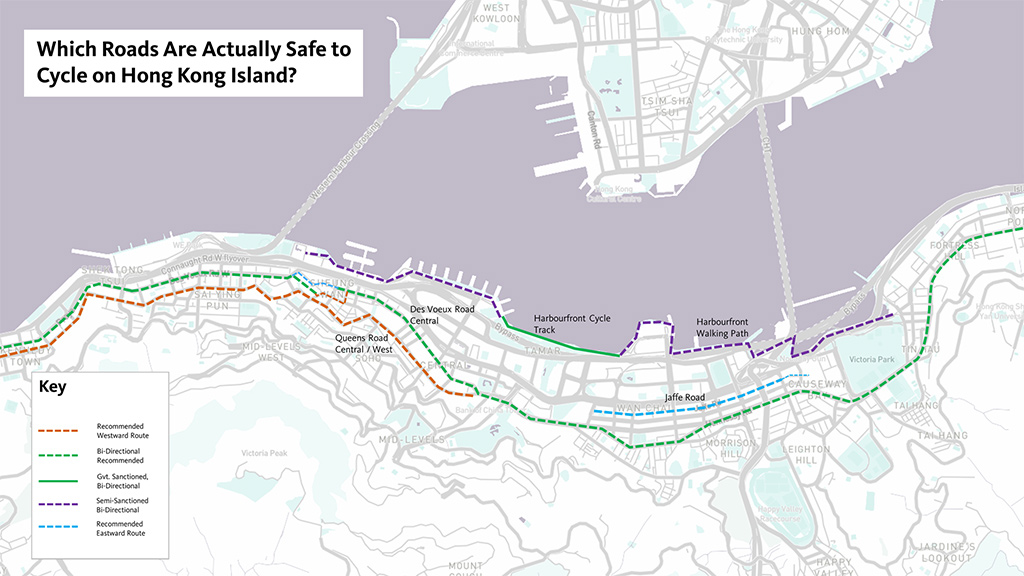
Blog
Commuting by Bicycle in One of the Most Cycling-Unfriendly Cities
Is there opportunity for micromobility in Hong Kong? A look at cycling in Hong Kong’s CBD.
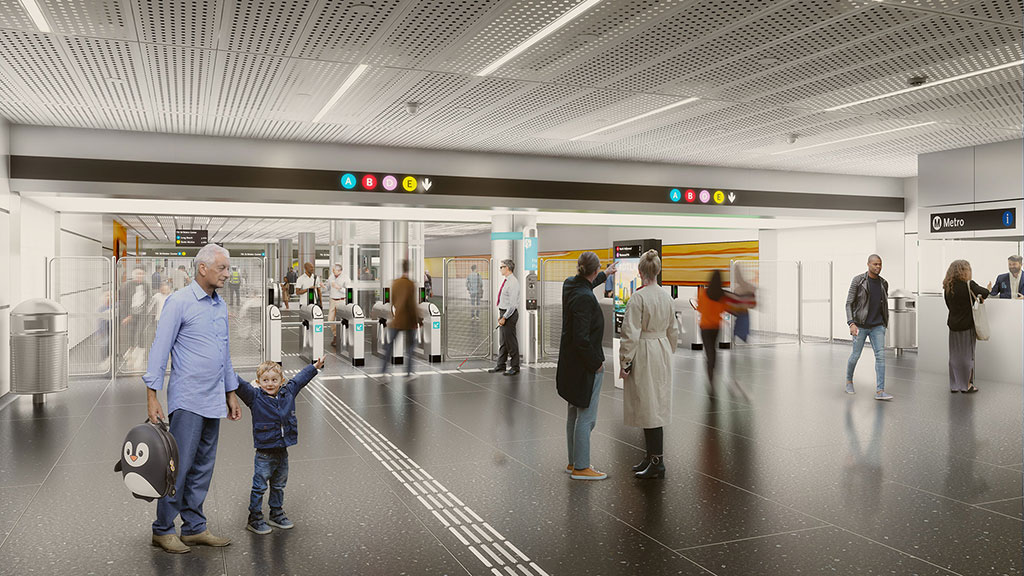
Blog
Understanding the Modern Transit Passenger Experience
What makes a great (or not-so-great) transit experience? Here are five factors that drive passenger experience.
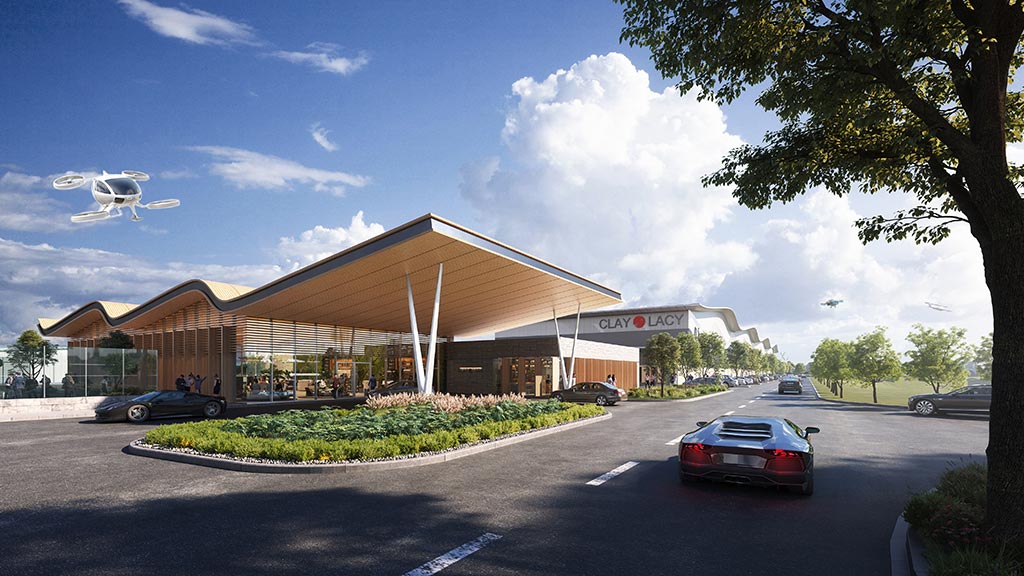
Blog
Fixed Base Operators: A Gateway to eVTOL Takeoff
The Advanced Air Mobility (AAM) and electric Vertical Takeoff and Landing (eVTOL) revolution is already here. See how eVTOL is taking off.
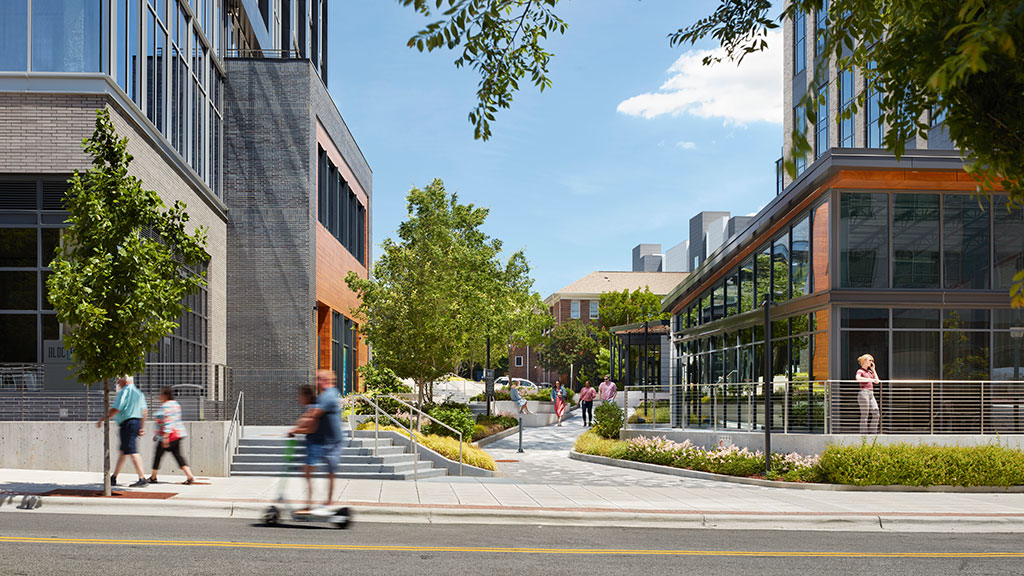
Blog
Trends to Watch Shaping the Future of Urban Mobility
Gensler’s research, planning, and transportation experts discuss how residents’ mobility experiences, opinions, and preferences are shaping how cities are planned and built.
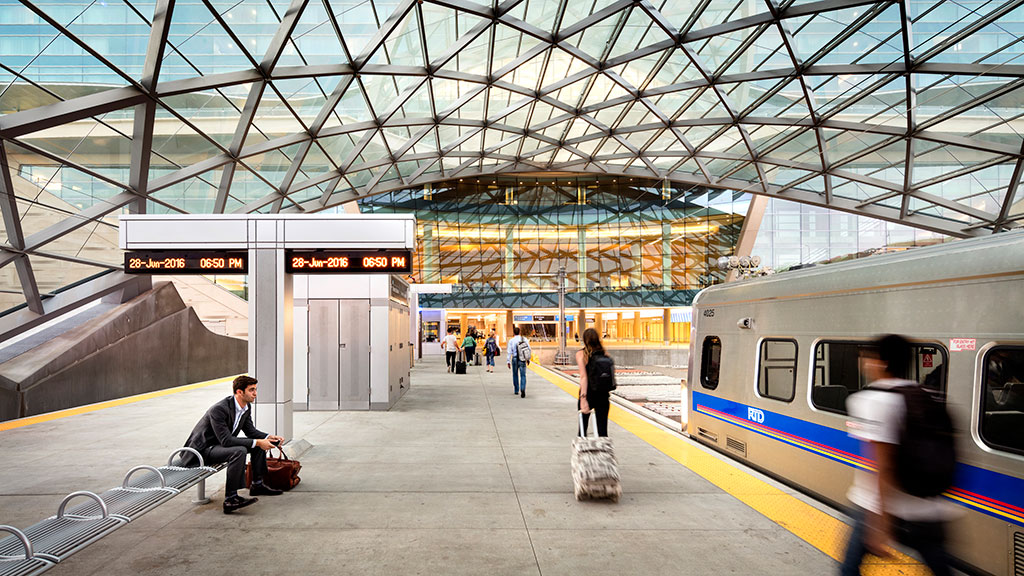
Blog
What Can Cities Do to Bring People Back to Public Transit?
While most city dwellers feel positively about their city’s public transit system, fewer feel that it provides a great experience.
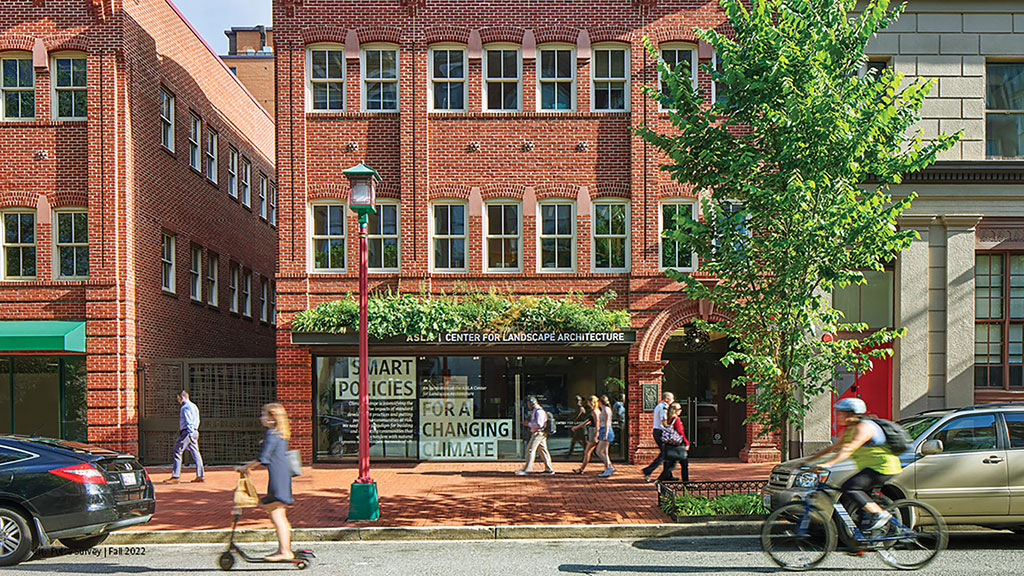
Blog
What the Rise of Micromobility Means for the Future of Cities
One trend that emerged from Gensler’s survey of 15,000 residents in 30 cities may change how we navigate urban life: micromobility is more popular than ever before.
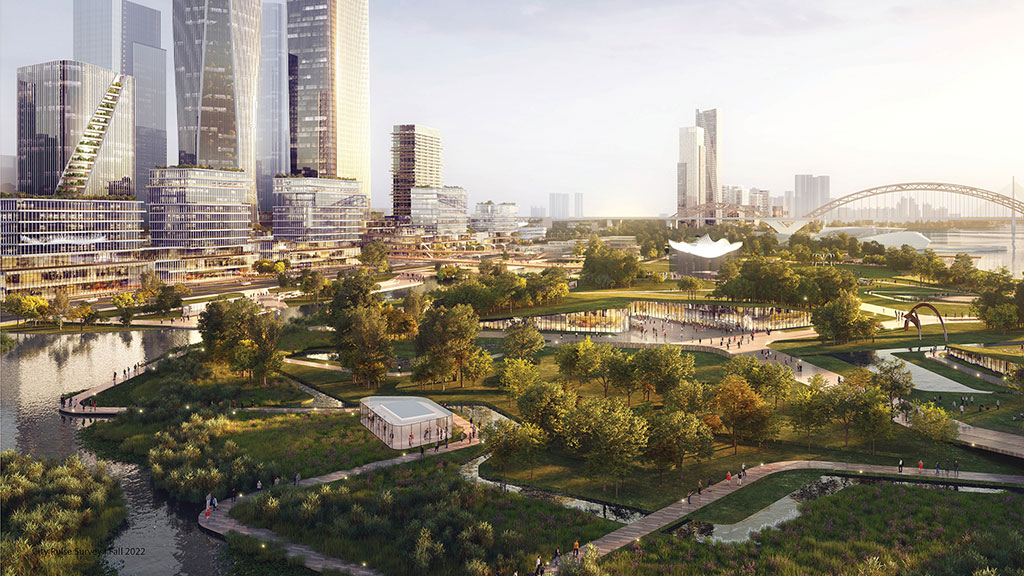
Blog
What Gensler’s Latest City Pulse Says About Sustainable Transportation
What can cities do to promote more sustainable transportation options? Gensler's City Pulse data reveals that it may come down to convenience and cost.
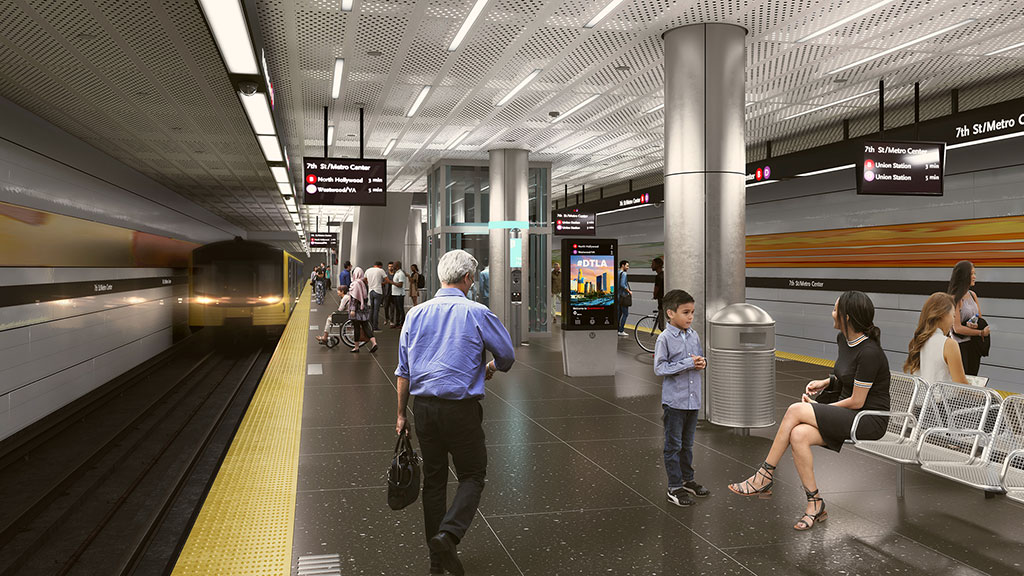
Blog
Using Design to Improve the Transit Experience for Los Angeles Metro
Gensler teamed with LA Metro to create a series of innovative Integrated Station Design Solutions to improve the overall transit experience.
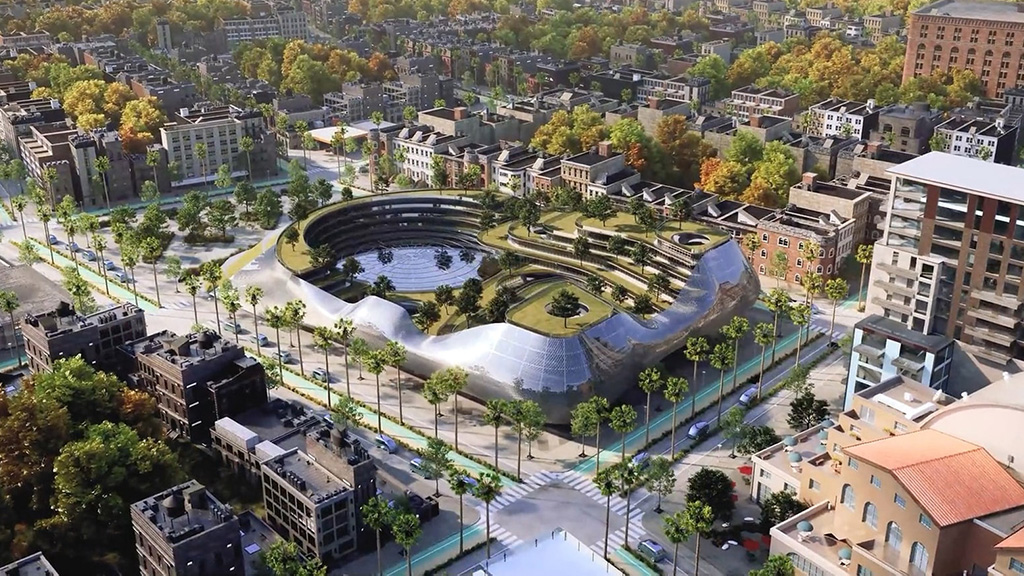
Blog
Together, EVs, AVs, and Multimodal Transportation Will Create More Vibrant Cities
We want the act of moving around our cities and communities to be convenient, quick, clean, accessible, and inclusive. So what does that look like, both today and in the years to come?
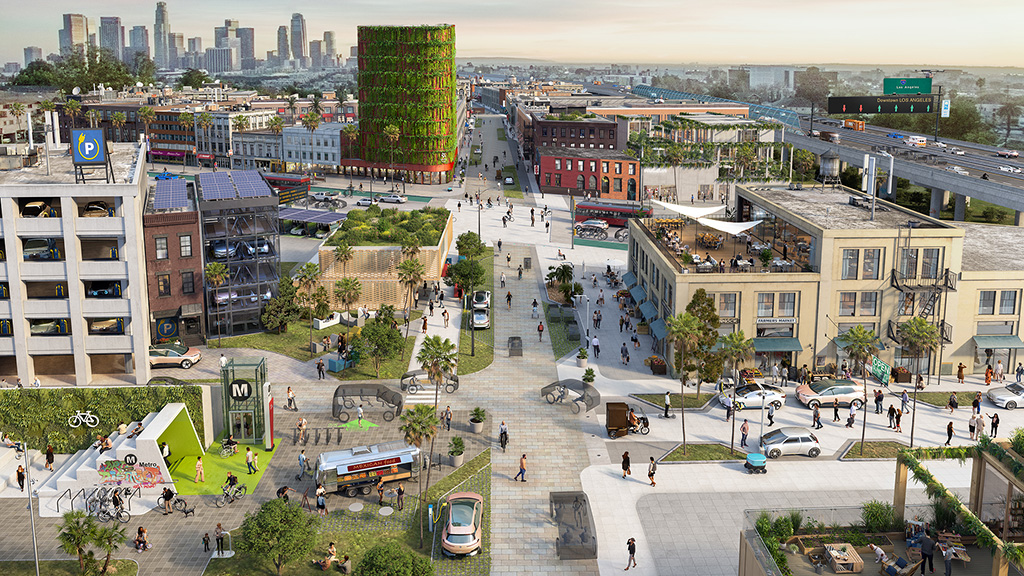
Blog
How the Intersection of Architecture and Mobility Will Shape the Cities of Tomorrow
Recognizing a shared interest in solving complex urban mobility challenges, BMW Designworks and Gensler came together to explore a new range of design ideas for urban living in a project called Architecture X Mobility.
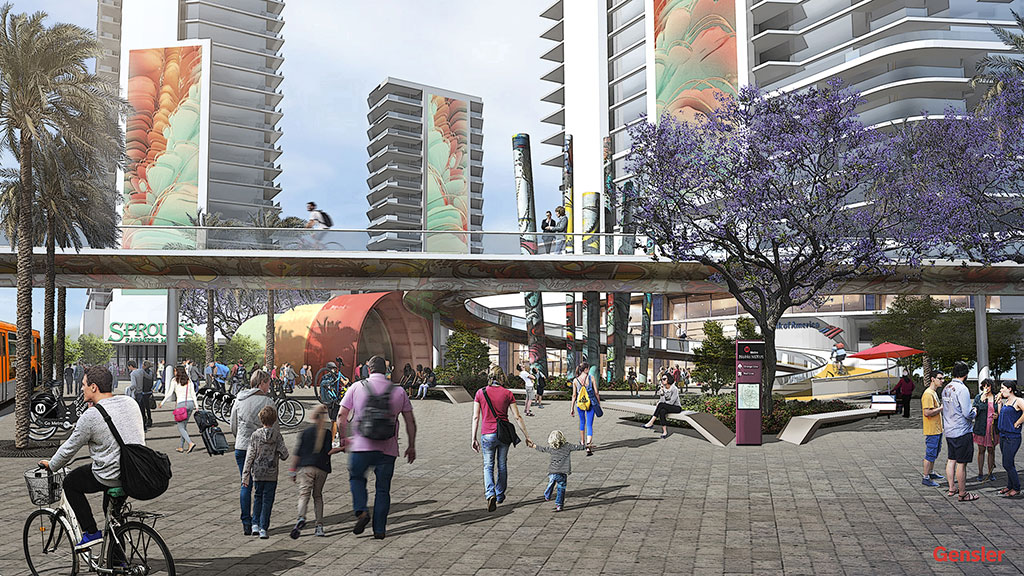
Blog
If Rush Hour Goes Away, How Should Public Transit Adapt?
A successful future for public transportation is likely to consist of highly fluid service that supports more trips throughout the typical day than just the daily commute.
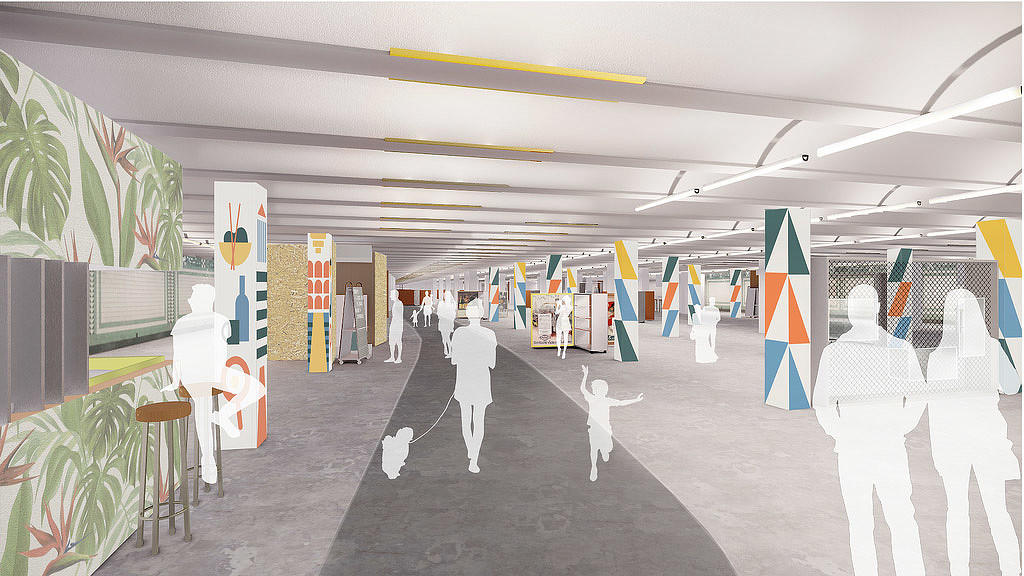
Blog
Using Technology to Help Solve Persistent Accessibility Problems in Public Transit
For the millions of people with visual, cognitive, or mobility challenges, accessing stations via elevators or even physically boarding a train or bus are daily concerns.
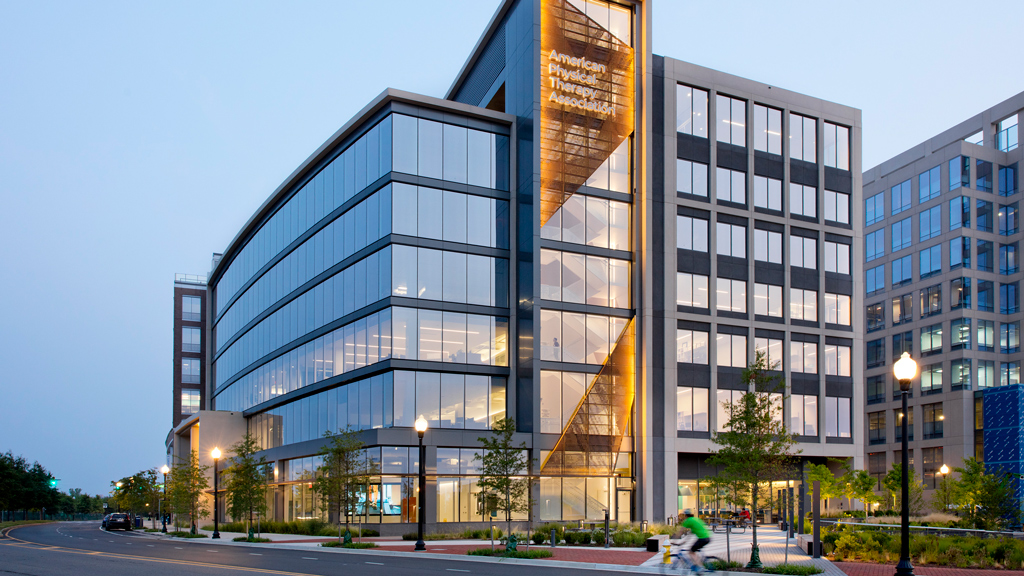
Blog
Designing a Workplace That Optimizes for Movement and Mobility
What would an office building that puts movement front and center be like? A new headquarters building designed for the American Physical Therapy Association explores that idea.
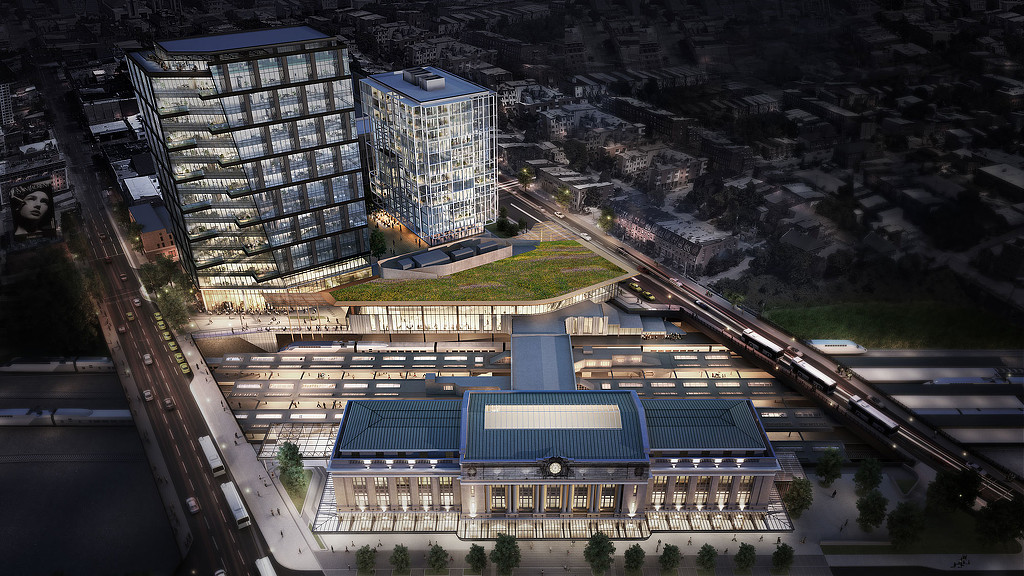
Blog
New Design and Infrastructure Projects Are Unlocking the Northeast Rail Corridor
Investing in the Northeast Corridor — the most traveled rail corridor in North America — could unlock the East Coast’s full potential.
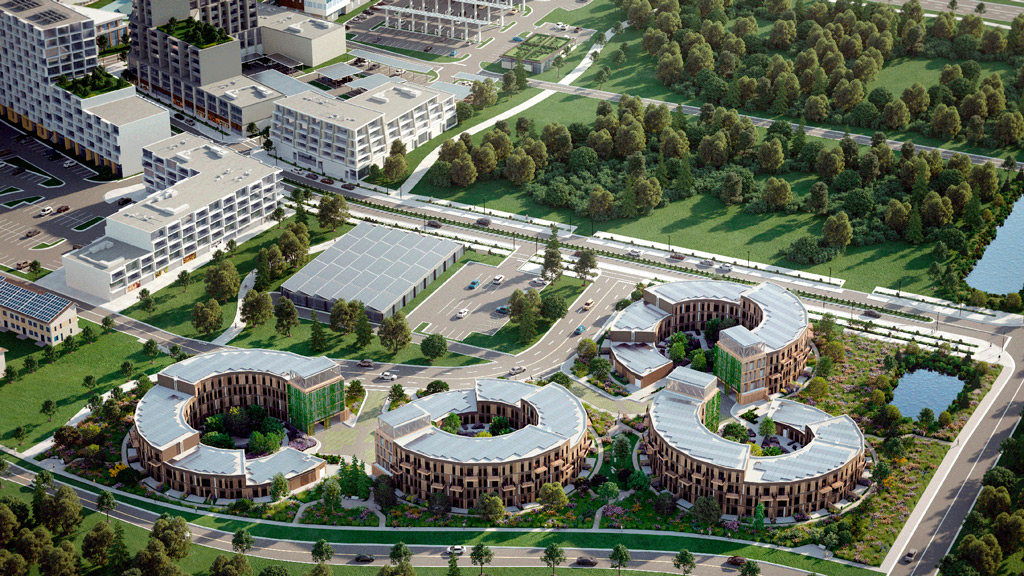
Blog
4 Ways Electric Mobility Will Reshape Our Cities
In the past few years, we've hit a tipping point for electric mobility. But the real game-changing story is largely being overlooked: electric vehicles have the potential to dramatically reshape our cities.
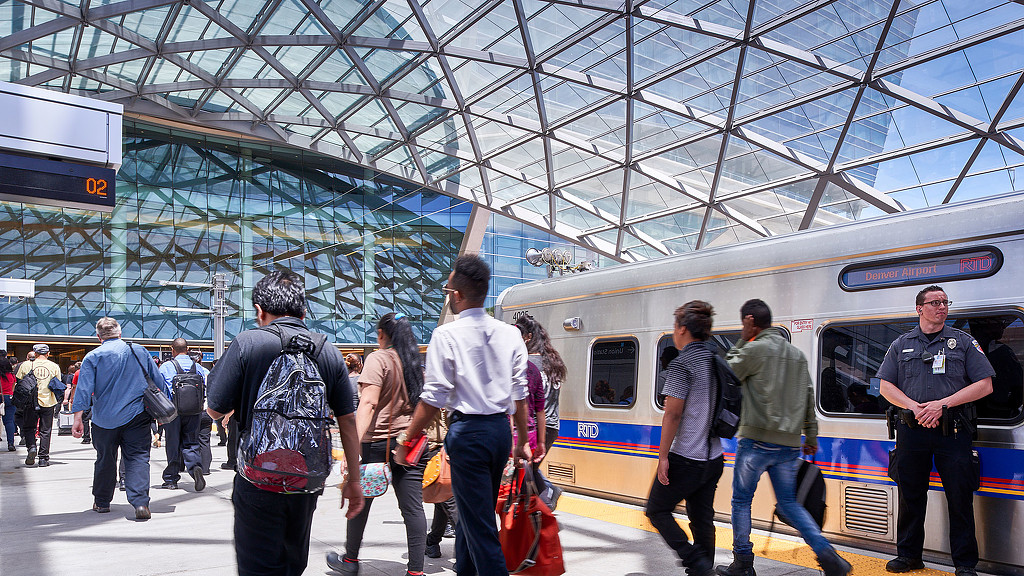
Blog
Reimagining a Safer, More Equitable Daily Commute
Here are four strategies to create a public transit commute that prioritizes people’s safety and equity.
Trends in Mobility & Transportation
Transit agencies prioritize safety and the passenger experience.
By improving cleanliness, adding conveniences like digital connectivity, and designing transit stations with more retail and hospitality options, agencies can allay safety concerns for riders.
Cities focus on housing near transit to revitalize urban neighborhoods.
As local governments incentivize mixed-used transit-oriented developments (TODs) around traditional commuter stations, cities see opportunities to develop affordable, transit-adjacent housing that keeps these riders connected to the urban core.
New infrastructure investments cater to EVs and micromobility.
Demand for more EV charging stations and the rise of micromobility is pushing cities to invest in infrastructure projects that supports these modes of transportation.
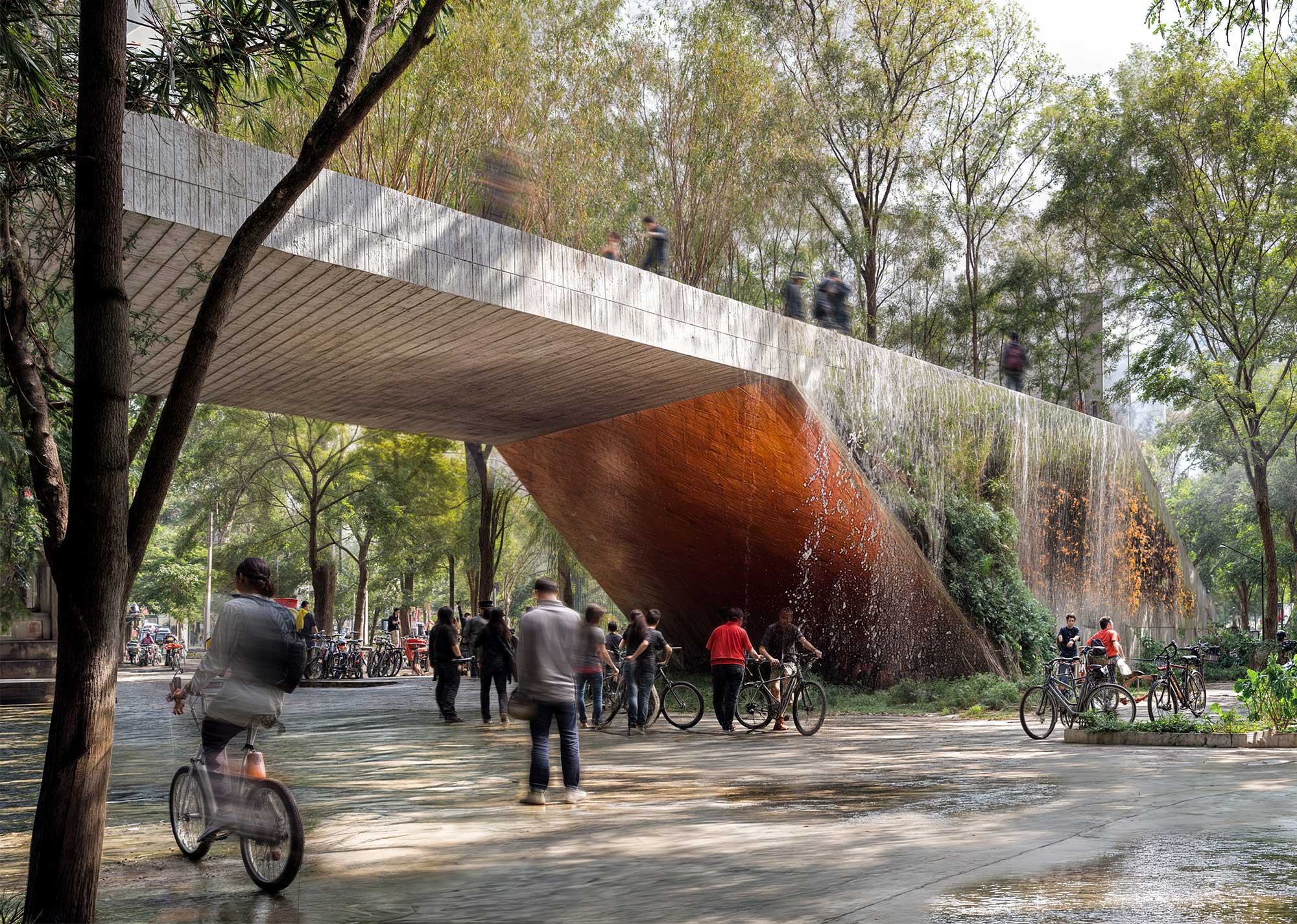
MOBILITY & TRANSPORTATION LEADERSHIP

Carmen Cecilia Cham
Mobility & Transportation Leader, Project Director
Carmen Cham is a leader of Gensler’s Mobility & Transportation practice, who leads the planning and design of innovative transportation systems and buildings.
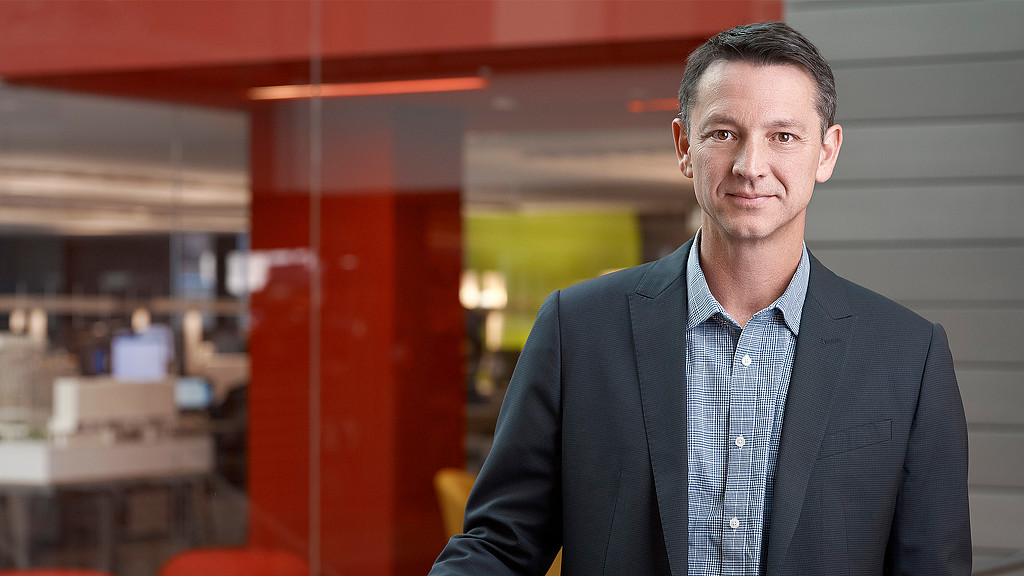
Dylan Jones
Mobility & Transportation Leader, Cities Sector Leader, Principal
Dylan Jones is a global leader of Gensler’s Mobility & Transportation practice, who works at the intersection of private development and public infrastructure.

Jaymes Dunsmore
Mobility & Transportation Leader
Jaymes leads Gensler’s Mobility & Transportation practice in the Southwest region, focusing on transforming the future of cities and mobility through design innovation.
NEWS
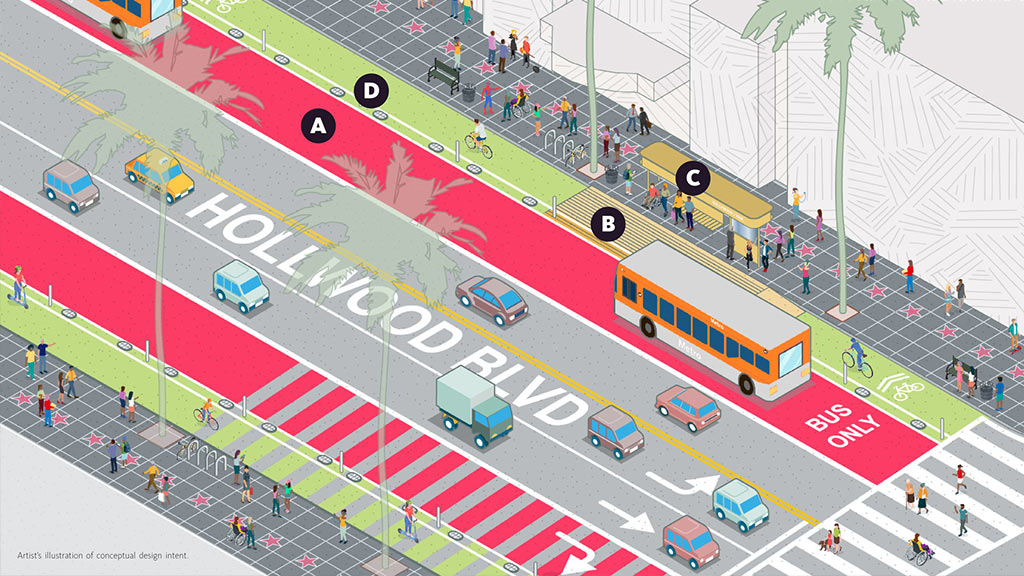
In The Media
![]() Bloomberg CityLab
Bloomberg CityLab
Bloomberg CityLab Toured the Hollywood Walk of Fame With Gensler Mobility & Transportation Leader Jaymes Dunsmore
Dunsmore discussed the firm’s vision to reimagine the destination by making it safer for visitors and locals, improving transportation, upgrading the streetscape, and providing better tree coverage to mitigate the heat island effect.
June 25, 2024
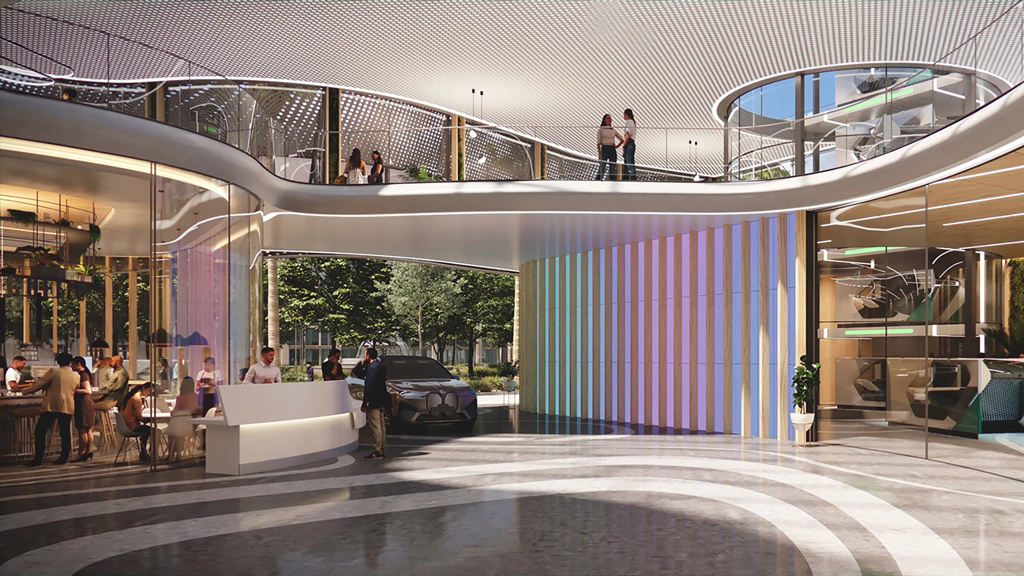
In The Media
![]() Podcast One
Podcast One
The Future of Cities and Mobility, Garages of the Future, and Rethinking Gas Stations
Podcast One aired a conversation with MotorTrends’ hosts and Gensler Mobility & Transportation Leader Dylan Jones about the future of cities and mobility, garages of the future, and rethinking gas stations.
March 28, 2024

In The Media
![]() Time Out
Time Out
Time Out Shared Gensler’s Renderings of the Hollywood Walk of Fame’s Pedestrian-Friendly Makeover
The project will introduce bus and bike lanes, widen sidewalks, improve safety, and reduce car traffic.
March 21, 2024
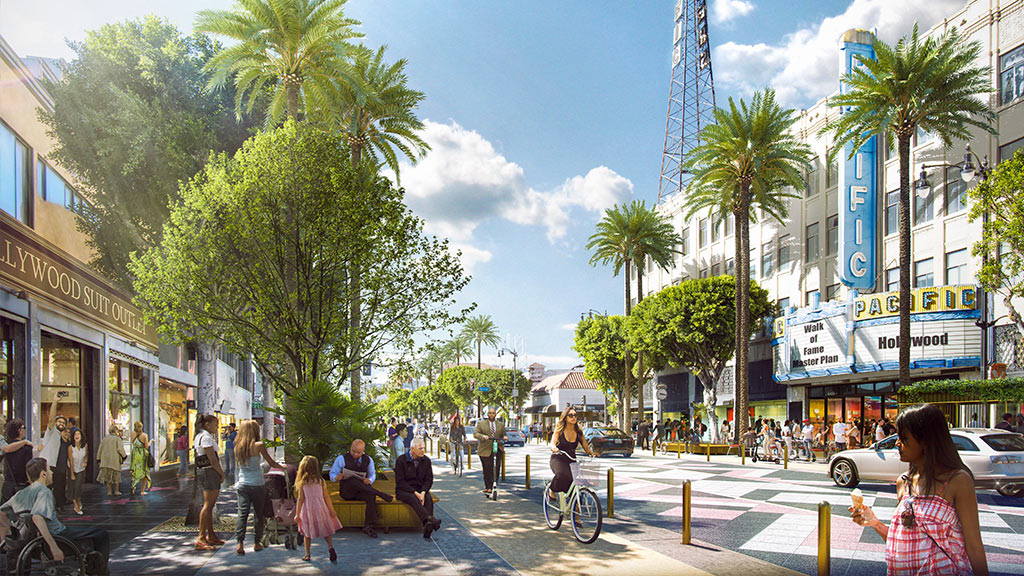
In The Media
![]() Los Angeles Times
Los Angeles Times
Gensler’s Design Concept To Revitalize Hollywood Boulevard and the Walk of Fame
The plan will eliminate two traffic lanes along most of the route, adding bike lanes and widening sidewalks to enhance the experience for everyone.
March 21, 2024
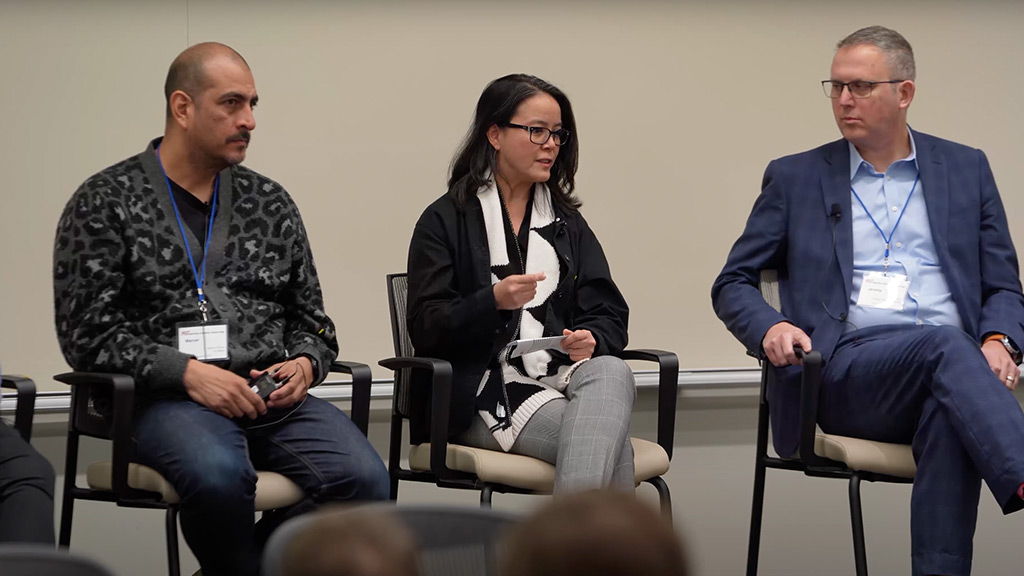
In The Media
![]() MIT Mobility Initiative
MIT Mobility Initiative
MIT Mobility Initiative Featured a Panel on the Future of Public Transportation
The panel included transit authority leaders across San Francisco, Los Angeles, and Chicago, as well as Gensler Mobility & Transportation Leader Carmen Cecilia Cham.
November 16, 2023
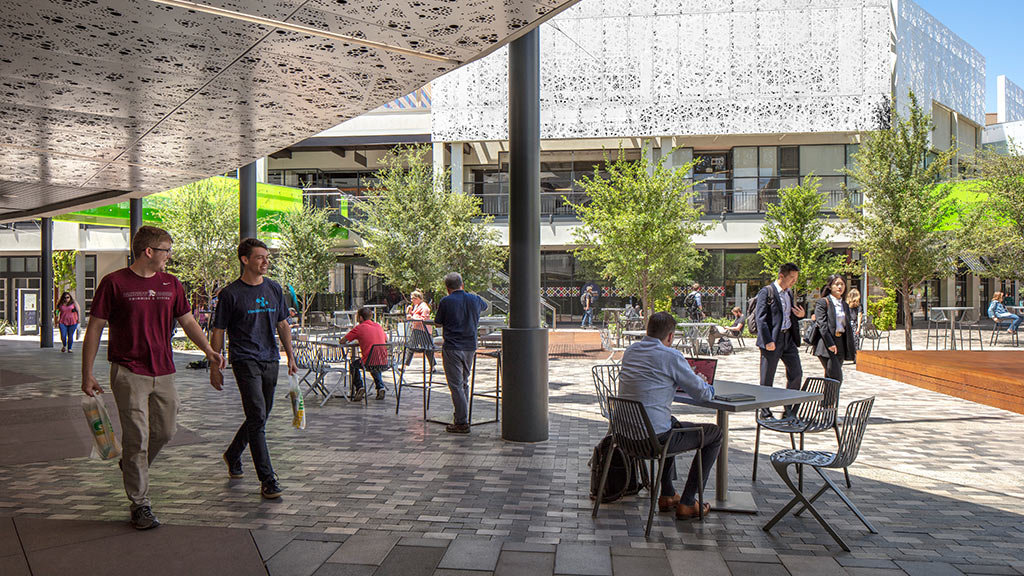
In The Media
![]() Green Building & Design
Green Building & Design
gb&d Highlighted the Arizona Center in Its Sustainability Examples and Trends
Green Building & Design referenced how the Gensler-designed Arizona Center enhances pedestrian infrastructure and improves walkability to reduce vehicle dependency and lower emissions.
November 14, 2023
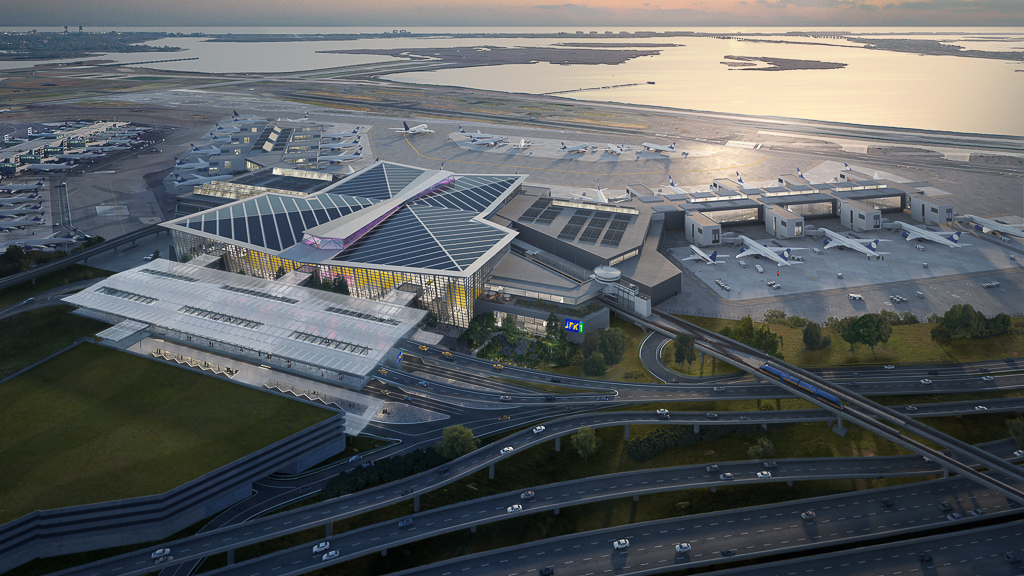
In The Media
![]() Fox5 NY
Fox5 NY
Gensler Mobility Leader Dylan Jones Highlights How New Forms of Mobility Will Shape the Future of Travel
Dylan Jones discusses Gensler’s work on JFK International Airport’s New Terminal One and a design concept for Uber’s vision for an aerial rideshare platform.
September 20, 2023
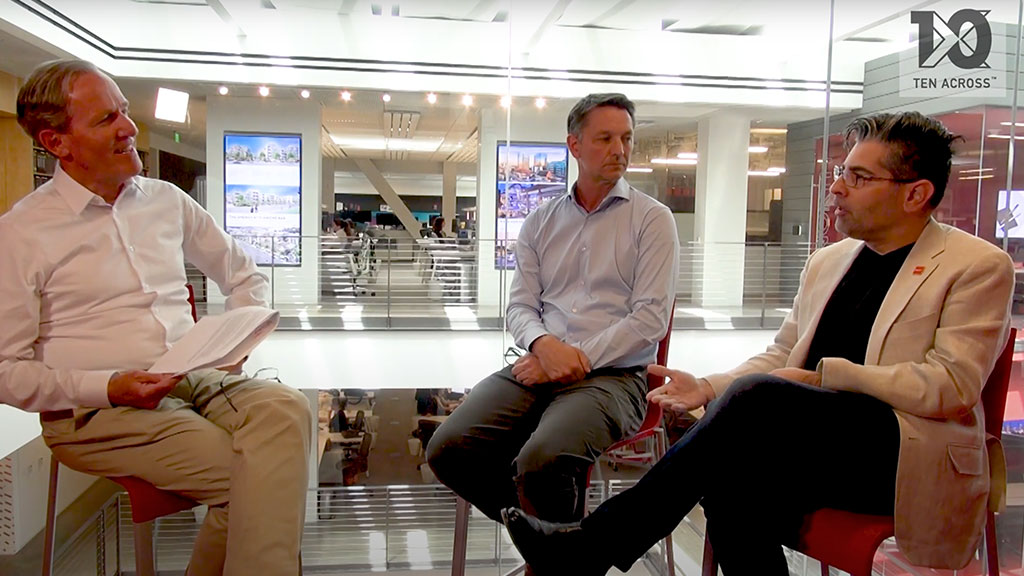
In The Media
![]() Ten Across
Ten Across
What Sustainable Cities of the Future Could Look Like
Ten Across interviewed Gensler Mobility & Transportation Leader Dylan Jones at Gensler’s Los Angeles office about what the sustainable cities of the future could look like. Watch the video.
August 04, 2023
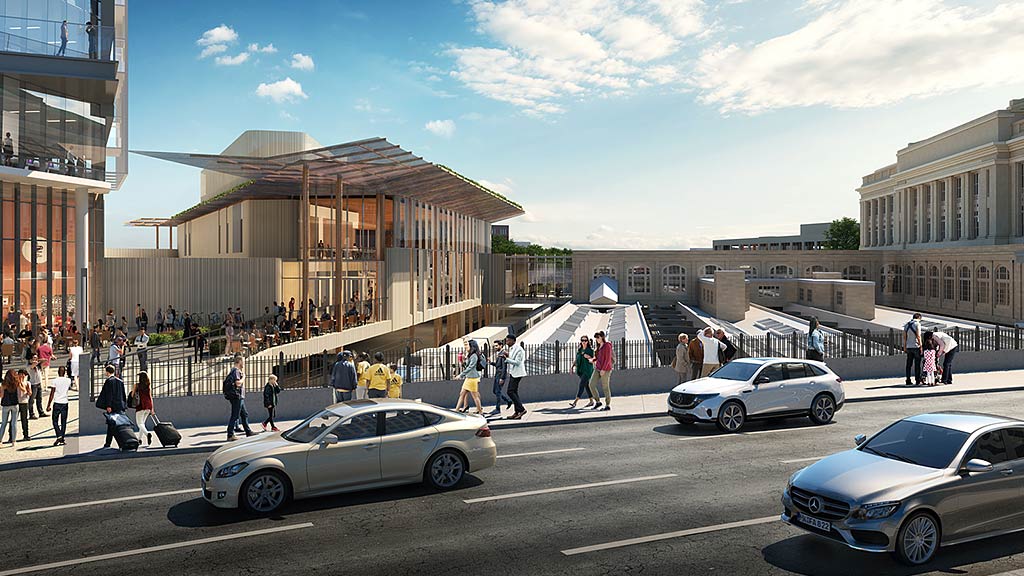
In The Media
![]() The Daily Record
The Daily Record
Amtrak Applies for $7.3 Billion Funding for Northeast Corridor Project Improvements
Gensler is named as part of the team Amtrak selected for master plan improvements to Baltimore Penn Station.
June 06, 2023
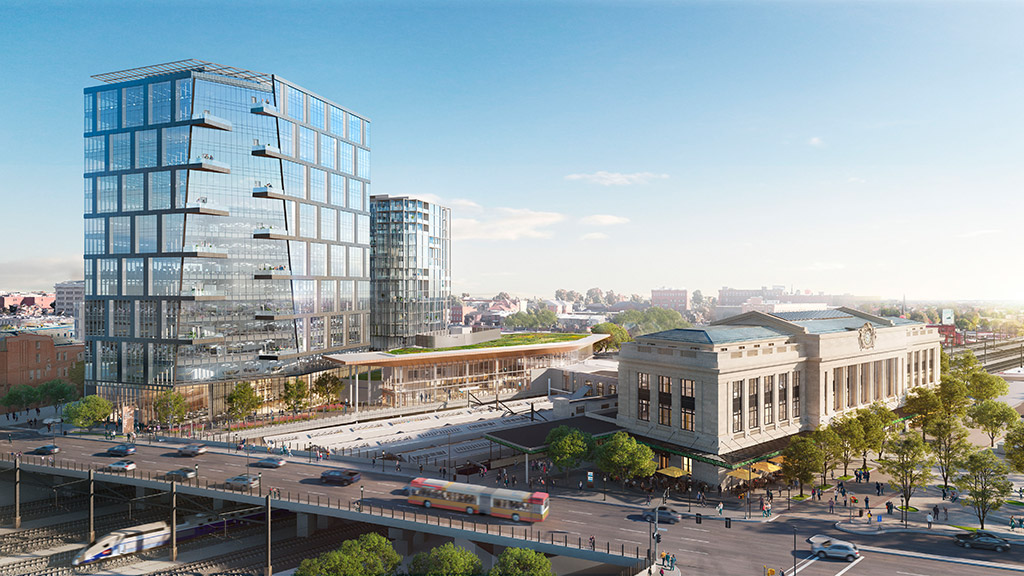
In The Media
![]() The Architect’s Newspaper
The Architect’s Newspaper
Gensler’s Vision To Renovate Baltimore Penn Station’s Beaux Arts-Style Building
The firm’s redesign includes renovating the historic building and adding a modern glass addition with a covered passageway connecting to the multimodal hub.
April 13, 2023

In The Media
![]() Baltimore Magazine
Baltimore Magazine
The Rebirth of Baltimore’s Penn Station Features an “Airy, Luminous Design” by Gensler That Encourages Visitors To Linger
Design Director Peter Stubb noted a glassy wall overlooking the old station and tracks will showcase “train as theater” and celebrate its rich history.
January 26, 2023
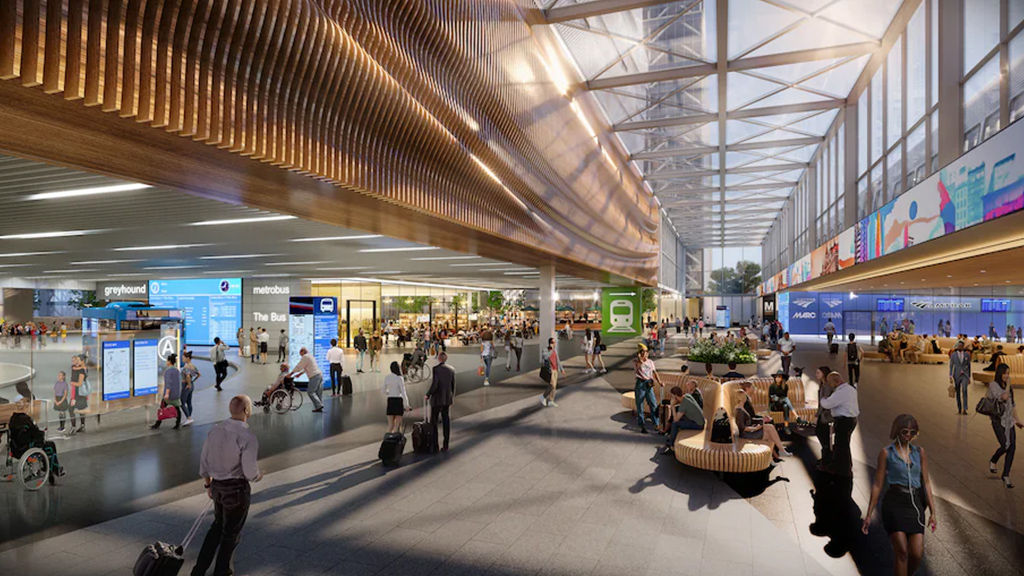
In The Media
![]() The Washington Post
The Washington Post
A Vision for a Train Hall to Connect Transit Lines and Enhance the Pedestrian Experience
Gensler’s renderings were unveiled of a plan to transform New Carrollton’s train hall, the busiest transit stop in Prince George’s County, Md.
August 25, 2022
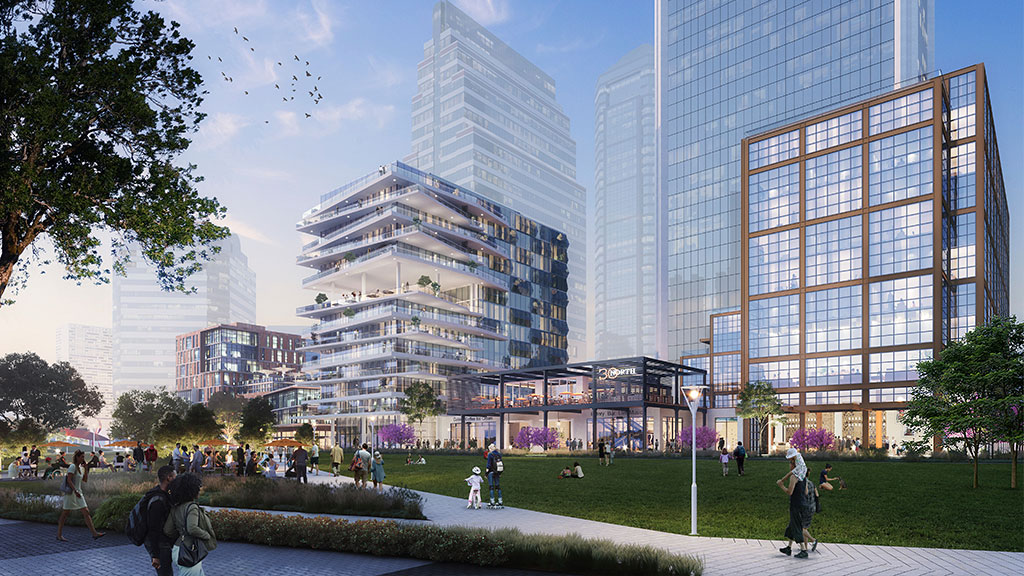
In The Media
![]() Bloomberg
Bloomberg
Gensler’s City Pulse Survey Data Reveals What People Value in Downtowns
City dwellers ranked the factors they most value in business districts, with access to social spaces topping the list.
August 17, 2022

In The Media
![]() Smart Cities Dive
Smart Cities Dive
The Future of Mobility Is Electric, Autonomous, and Multimodal
Gensler co-CEO Andy Cohen explains how we can use this framework to start designing better infrastructure, better cities, and a better future.
August 05, 2022
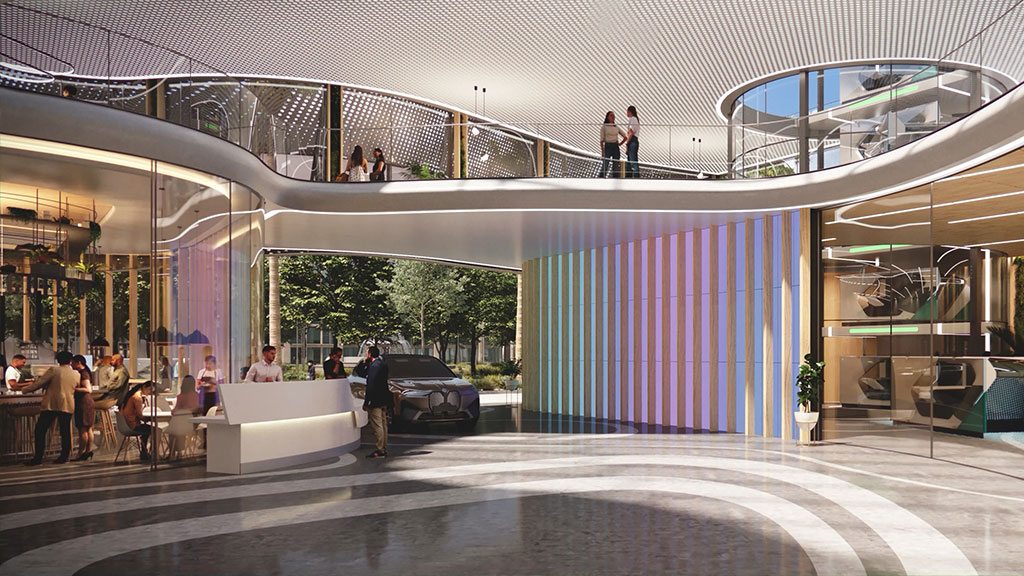
In The Media
![]() Experience Magazine
Experience Magazine
Charging EVs Takes Time. So Rest Stops Could Become Luxurious.
Gourmet food, yoga studios, dog parks, work spaces. Meet the highway destination of the future.
July 15, 2022
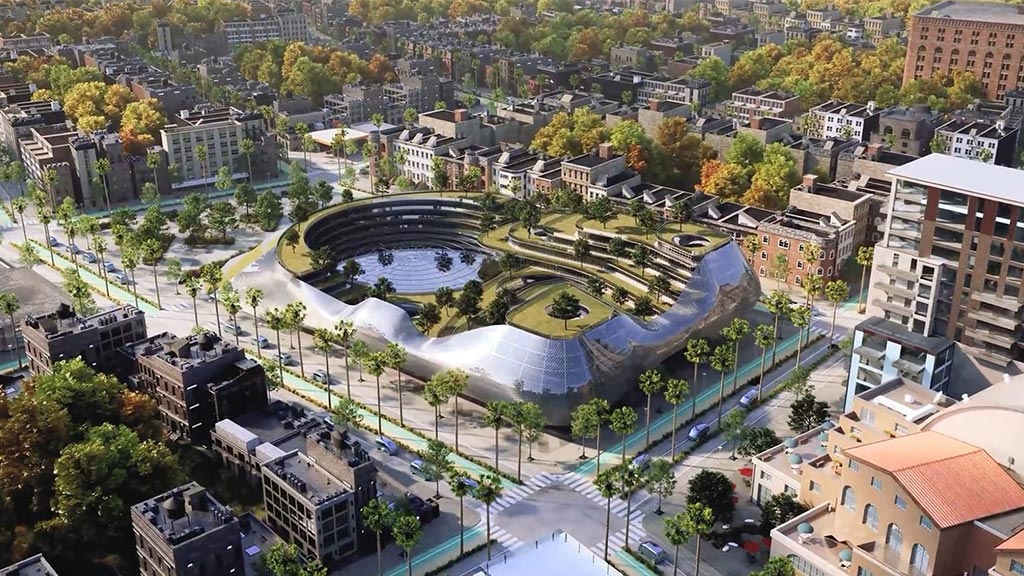
In The Media
![]() Fortune
Fortune
BMW Designworks and Gensler’s Vision for the Post-Gas, Electric Future
Co-Firm Managing Principal Jordan Goldstein explains the concept of the Nth space as a “new-age community center” for the post-pandemic era of hybrid work.
June 07, 2022